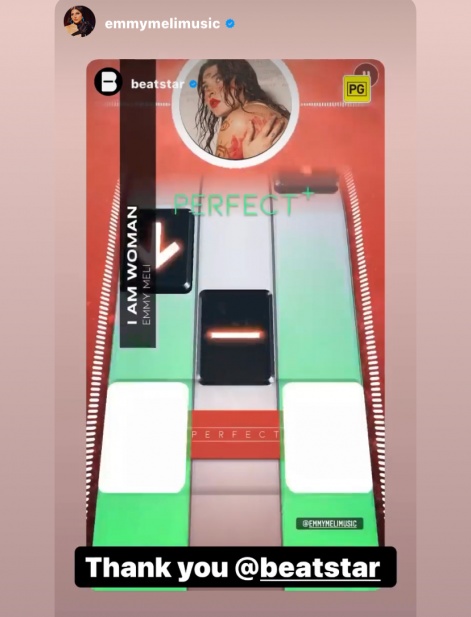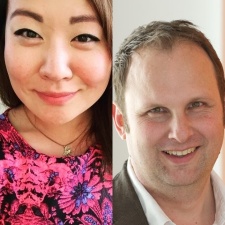Space Ape Games' Beatstar has only been available since September 2021, and in that brief time it has reached the number one downloads list in 24 countries, was ranked number one in overall apps on Google Play, and most importantly (in our humble opinion) was awarded Game of the Year at the 2022 Mobile Games Awards.
But reaching music genre success was not without setbacks: years wrestling its rhythm action foundation with mechnical complexity, only to be discarded, and a heavily populated graveyard of failed prototypes across Space Ape's numerous teams reveal the many possible alternative outcomes for Beatstar.
Space Ape Games' Charmie Kim, game lead on Beatstar, and Simon Hade, co-founder and chief operating officer, detail the tumultuous journey, influence of Supercell's support, and the existance of people who play Beatstar with their chin.
PocketGamer.biz: Space Ape's earliest days defined it as an upcoming powerhouse in mobile strategy games. How did the idea of a rhythm action game emerge, and what was the point in development when you felt you had something incredible on your hands?
Simon Hade: We founded the studio with the expectation that we would be multi-genre. Actually, our first game was a social competition you played while watching live NFL matches. But when failed, we decide to focus on something more traditional. Innovation in gaming is important, but we were trying to introduce a new style of gameplay, to an audience who was not used to playing games, on a new platform. This combination made it very niché.

We pivoted hard into strategy because we saw a big audience who was being under served – namely the most competitive players looking for deeper, more social, dynamic experiences. We knew we could cater for them, because they were a lot like us.
So, we built tech that allowed us to push ten times more updates than everyone else in the category, and run events several times per week: we focused on innovation in the meta and social but kept the core gameplay familiar. The result was Samurai Siege, then we doubled down on with Rival Kingdoms, and finally found our first $100 million+ hit with Transformers Earth Wars.
Around five years ago we felt we had to make a choice: either continue making highly polished community live ops games that we had developed an expertise in, or we could branch out into new genres. We tried to do both for a while but it was very hard to split our focus between execution and innovation.
We felt we had to make a choice: either continue making highly polished community live ops games or branch out into new genresSimon Hade
Eventually we decided to burn our ships to focus exclusively on new genres and joined up with Supercell so that we could afford, financially, to do so. At that point, we had four prototype games, one of which was a music RPG. It was super early, we didn’t have any of the licensing in place, but we felt we had something incredible on our hands. So did Supercell.
Charmie Kim: Yeah, so it turns out the music RPG wasn’t it.
Our original vision for Beatstar was an RPG story game with a rhythm mechanic as opposed to the music game it is today. At the time, the only successful mobile music games were band management or idol games in Japan and Korea. Our original – flawed – thinking was that a music game that was primarily about skill could never be successful so we needed to contrive systems around the music game.
After a few years pushing in the original RPG direction, it became clear we needed to reboot. People loved the rhythm gameplay, and everything we added around it turned out to be a distraction.
Supercell backing meant we could afford financially to fail, but resetting the team and persisting with the music genre in the face of that failed first attempt was really hard. We had a strong vision for the gameplay and the core team always felt it was special but it was not obvious that it would work. It was such simple gameplay, and broke a lot of the conventional wisdom about what was needed to be successful in mobile F2P.
It wasn’t until a few months after global launch that it became obvious that we were onto something great. I’m proud that we backed our instincts and persevered when it would have been incredibly easy to give up.
Space Ape’s diverse portfolio involves many genres: an unusual strategy in the mobile industry. What are the transferable lessons you can take from shifting from genre to genre?
Hade: The biggest transferable lesson was in how to organise around new projects to set a team up for success. Being multi-genre is incredibly important for attracting and retaining top talent but it can also lead to a lack of focus. At one point, we had 11 game teams trying to crack almost as many genres. The result was 24 game kills in five years and a lot of frustrated game devs.
A few years ago, after a series of very frustrating messy kills, we reflected on our approach and decided we needed to focus on doing fewer things well. We had a great set of learnings from tackling a diverse set of games, but to be successful we needed to get better at execution.
The problem was we had a lot of smart, talented people who theoretically had a blank slate to self-organise and chase any idea they thought would achieve the company mission. However, in practice they would struggle to execute because every team was under-resourced. There was also no headspace between projects to learn from failure because when a game was killed, individuals joined similarly under-resourced teams rather than go up the learning curve together. Teams were making the same mistake twice and that was a trigger for us to change the approach.
We had 11 game teams trying to crack almost as many genres. The result was 24 game kills in five years and a lot of frustrated game devs.Simon Hade
These days, we are still committed to exploring different genres, but crucially we only kick off a new game when there is a fully-formed team with great chemistry. When that team is available to start, then we charge them with figuring out what game to make. There are no constraints to what they work on – other than it needs to align with our mission [editor’s note: “to make the world’s best mobile games”] – but inevitably the most successful teams gravitate to ideas where we have some insights or expertise that has been developed from an existing or failed game. Fortunately, we have such a range of experience in the company that most people can find something they are passionate about at any given time, and if not there is high confidence that they will in the near future.
If they fail, provided they are working effectively, we encourage them to stick together and re-roll go up the learning curve together. All our strongest new game bets have come from this approach.
Kim: Beatstar is a good example of this new approach. When we killed the RPG version of the game, there was a core group of us who were working really well together and were passionate about the new direction.
We also had a strong foundation to build on. We’d learned so much from licensing the music in the game, to understanding what made for good gameplay we weren’t starting from scratch. We also knew each other very well and had great chemistry at that point. We felt like we understood why we’d failed and could immediately apply that to the new project.
As a result, the version of Beatstar as we know it was ready for soft launch within around six months and the rest is history.
Beatstar had its soft launch period in Canada. How did the game change during this period?
Kim: It changed a lot! At first, we underestimated how much challenge players wanted. In F2P games, you usually want to unfold the complexity over time. But when we tried to introduce easy songs it made the game boring and caused players to churn, so our beatmapping (the process of designing the swipe and tap interactions and the visual cues in a song, what we call our chart design) got more challenging over time.
Another big change came in content. As we learned what types of music players wanted, and we got faster at licensing new songs and getting them into the game, people played more. At the start of the soft launch, we had fewer than 50 songs. Now we have hundreds of songs and have artists beating our door down to be involved so we are able to cherry pick the very best songs that we know players will love.
We also redesigned the reward loop to make sure unlocking new songs came at the beginning of a session. This is why we introduced the timed chests.
Finally, we reduced a lot of complexity. Coming from mid-core games, our tendency was to add depth through systems. What we found with Beatstar is that the music gameplay needed to be the main course. We didn’t need to contrive systems to retain players because the gameplay loop was intrinsically satisfying.
At the time of writing, Beatstar has re-emerged in the top 50 most downloaded free games on iOS. What are your expectations for Beatstar's lifespan?
Hade: We’re just getting started. Beatstar is already the top grossing music game globally, played by 26 million people and generated nearly $50 million in revenue in 6 months. But our ambitions are much bigger than that: our goal is for Beatstar to be the most iconic music game of all time. I want people to look back in 10 years’ time and talk about Beatstar in the same way we talk about our quintessentially formative experiences like Guitar Hero or Mario.
Kim: I get most excited about Beatstar’s potential as a platform for music discovery. I love reading feedback from players who discovered a particular song or artist because of Beatstar. The game works so well for music discovery because you need to really pay attention to the track. The tagline for the game is “Touch Your Music” for that precise reason. When you play a song over and over in Beatstar, it sticks with you.
For example, we have had 1.35 billion song plays in Beatstar in six months. We have worked with artists like Alok, Alan Walker, Camilla Cabello and Ed Sheeran to release their new songs in Beatstar on the same day they are released on streaming. A new song can get millions of plays in Beatstar in the opening weekend, and the game can drive serious album pre-saves on streaming, making Beatstar a serious platform for music discovery.
Whilst working with brand new tracks from mega artists like Camilla Cabello and Ed Sheeran is amazing, I’m also excited about the prospect of Beatstar playing a role in breaking new talent. Much like we can identify TikTok as the platform that broke Lil Nas X, I believe we will have multiple mega artists in years to come who will point to Beatstar as giving them their big break.

Space Ape has been supported by investment from Supercell for several years, and they have been a persistent element of Beatstar's promotion. Can you discuss your partnership and how it led to the integration of Supercell ID within Beatstar?
Hade: Our relationship with Supercell teams is very organic. We routinely share builds with Supercellians and other investee companies and we’ll often get great feedback and a small community of testers.
But with Beatstar things were different: when we shared the first build of Beatstar it immediately went viral across the organisation. We ended up with more than half the company playing and they were voracious for new content and features.
Then we started getting pings from people who wanted to help. One UX designer was between projects and so seconded onto Beatstar and stayed on the team until launch. The Supercell marketing team in San Francisco volunteered to help us develop the brand and our launch marketing campaigns.
And, of course, Supercell ultimately helped fund the licensing costs and marketing so we could give the game the best possible chance of success. But all of that was only possible because the teams at Supercell were so excited about the game and keen to help.
Since this was a new audience, and a new type of game that Supercell would probably never have attempted internally, this made the project even more exciting and I think really validated the thesis behind our partnership.
Kim: We do cross promotion with all our games at Space Ape. When we launched Rival Kingdoms, we put a Samurai Siege troop in the game and vice versa as a nod to the community.
We had commissioned a special track in Fastlane by a UK grime rapper Harry Shotta that was a celebration of all the Youtubers who were in the game, so that was a natural addition to Beatstar. We then licensed the Stan Bush classic You Got The Touch from the 1984 Transformers animated movie for our Transformers Earth Wars players. Our plan was to give these songs away as exclusive rewards to our community, but somehow we got talking about Brawl Stars.
In a game jam, one of the beatmappers produced a remix of the Brawl Stars theme song and put it in a test build. We shared it with Frank, the game lead, and Dani, community lead of Brawl and they loved it. At the time Frank was number two on the Finnish leaderboard for Beatstar! They are always doing fun community engagement activities and this went over so well with their players that they commissioned more songs from their fictional band the Bad Randoms and we also included them in Beatstar.
We always give these songs away for free to the communities and players love it. Before long, we had songs in Beatstar from Clash of Clans, Clash Royale, and Hay Day and then opened it up to other studios. For a special promotion with Apple for London Games Week, we included theme songs from Reigns, Surgeon Simulator, and Super Lead Day. We’re eager to add more gaming music content to Beatstar so if there are any devs out there who have a catchy iconic tune that would work well, please get in touch!
Hade: Regarding Supercell ID, it was a logical extension of the collaboration that was happening between the studios. We were adding a social layer to the game as we found it was fun to post scores to your friends and come back when they bragged about overtaking you in the leaderboard.
Like other Supercell-related activities, this was very organic. There was a team at Supercell who were looking for ways to expand the Supercell ID program, and we were in a stage of development where we had capacity to experiment with it in a way that was easier than in more established games. We found it worked really well and the community really appreciated the nods to the other games in there.
Rhythm gameplay is such a visceral game experience because music is spatial, and the touch screen is the most tactile of interfacesCharmie Kim
A big portion of the Beatstar userbase discovered the game through the Supercell cross promotion, and a lot of Beatstar players were similarly introduced to Supercell games also.
What would be the most important piece of advice you would offer developers also looking to make a mobile rhythm action game?
Kim: Focus on the gameplay. Rhythm gameplay is such a visceral game experience because music is spatial, and the touch screen is the most tactile of interfaces. Combined it makes for an entirely powerful experience of flow. Keep players immersed in the music and distract from that flow as little as possible.
Hade: Don’t underestimate the power, and the complexity, of properly licensed content. There are no shortcuts to this I’m afraid and it is a big barrier to entry in the category. We spent over 4 years putting all the agreements in place but it was worth it because players really value high quality well known recordings.
I'll confess, I lack the requisite dexterity for rhythm action games. But what's your favourite track to play?
Kim: My tip is to nod your head to the music as you play to keep time, it also helps you get into a groove! We have one guy in the community who posts TikToks of himself playing with his chin and another who plays blindfolded. Just keep practicing!
My favorite track at the moment is Bam Bam by Camilla Cabello and Ed Sheeran. We partnered with Sony to have the song in Beatstar on the same day it was available for streaming and we gave it away for free on our social media. It was such a buzz to see the game pop up in the artists social feeds.
In the opening week, the song was played millions of times in Beatstar and there was huge interest from the community to pre-save the album before it dropped. Now, the tune is an absolute banger so it was always destined to be a global hit, but I’m proud that Beatstar played a part in introducing the song to so many people through this campaign.






















